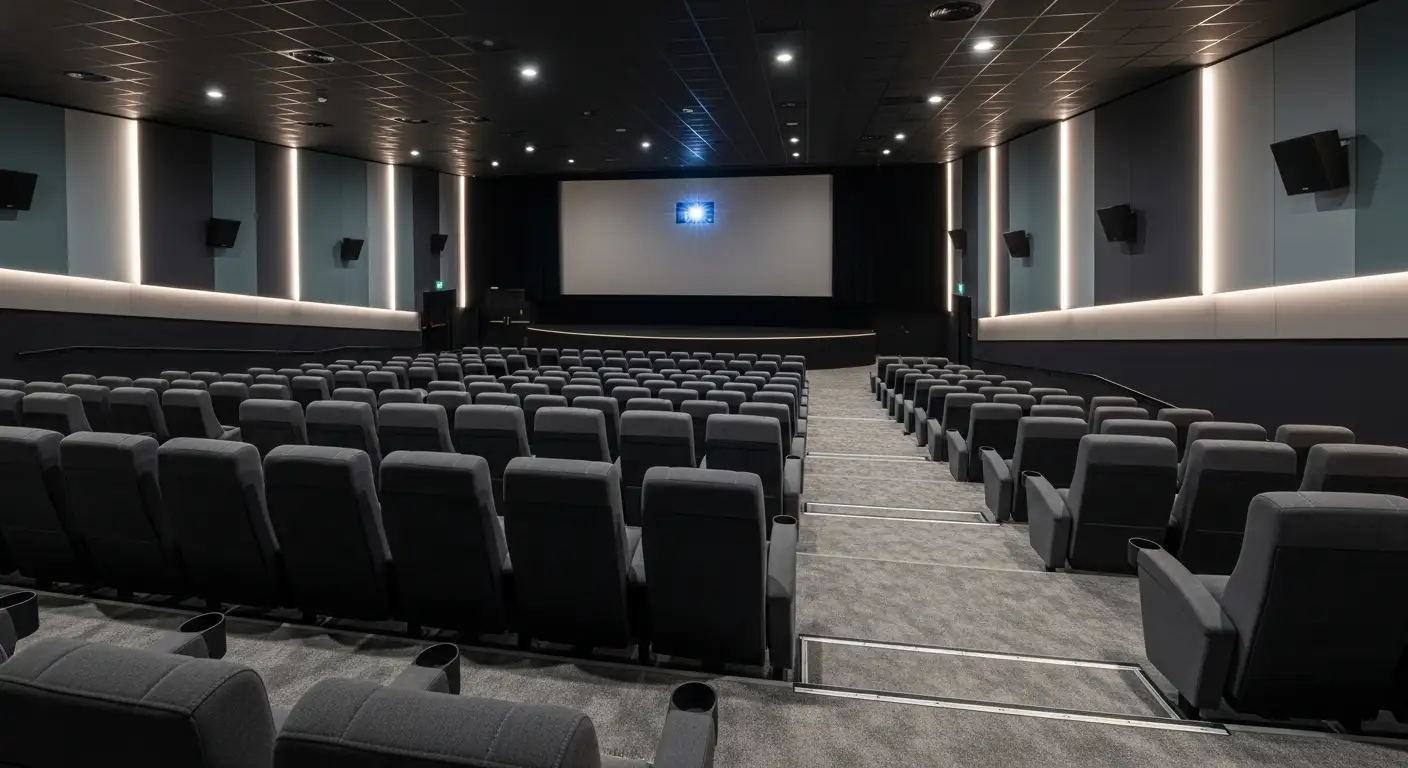Angelman Syndrome
An Overview of Angelman Syndrome: Symptoms, Causes, and Living with the Disorder
Angelman Syndrome (AS) is a rare neuro-genetic disorder characterized by developmental delays, speech impairment, distinctive behavioral patterns, and movement issues. Affecting approximately 1 in 12,000 to 20,000 live births, AS presents a complex constellation of symptoms stemming from abnormalities in the UBE3A gene on chromosome 15. Although there is no cure currently, ongoing research, supportive therapies, and resource networks provide hope for affected individuals and their families. This article offers a comprehensive exploration of AS, from its key features and underlying genetics to diagnosis, management, and recent advancements in research.
Key Symptoms and Behavioral Characteristics

Developmental delays and motor impairments
Children with Angelman syndrome typically show developmental delays between 6 and 12 months of age. These delays include difficulty supporting the head, delayed sitting, crawling, and walking skills. Many also experience hypotonia, or low muscle tone, leading to challenges with movement and coordination. As they grow, they often exhibit stiff or jerky movements and ataxia, which is a problem with balance and walking. Motor impairments are a hallmark of the disorder, affecting mobility and daily activities.
Speech and communication challenges
Severe speech impairment is a prominent symptom. Most affected individuals have little or no functional speech and may only say a few words if any. Despite this, many understand much of what is said to them. They often communicate using gestures, sign language, or communication devices. Early intervention with speech and language therapy can improve non-verbal communication skills and help in developing alternative methods of interaction.
Distinctive behaviors including frequent laughter and smiling
One of the most recognizable features of Angelman syndrome is a happy, excitable demeanor. Children often smile, giggle, and laugh frequently, sometimes inappropriately or without a clear stimulus. They tend to be easily excited and highly cheerful, which can be contagious. Additional characteristic behaviors include hand-flapping, arm uplifted movements, and hyperactivity. These behaviors contribute to their distinct personality, often described as extremely joyful and easily delighted.
Seizures and neurological symptoms
Seizures are common, beginning around age 2 to 3 years. They can take various forms, such as myoclonic, absence, or generalized seizures. In addition to seizures, affected children may experience abnormal EEG patterns indicative of neurological dysfunction. Sleep disturbances are also prevalent, with many children requiring less sleep or experiencing difficulties falling asleep. Over time, some seizure types may lessen in severity, but they often require ongoing medication management.
Physical features and facial appearance
Physical signs include a small head size (microcephaly), a broad, flat face, and large, protruding tongue. The facial expression is typically broad and happy, with a wide mouth and widely spaced teeth. As individuals age, features may become more coarse, with prominent jawlines and facial asymmetry. Other physical characteristics include deep-set eyes, telecanthus (increased distance between the inner eye corners), and sometimes scoliosis or other orthopedic issues. These physical markers, combined with behavioral traits, aid clinicians in early identification.
Genetic Foundations and Causes of Angelman Syndrome

What is the genetic cause of Angelman Syndrome?
Angelman syndrome primarily results from a deficiency of the UBE3A gene on chromosome 15. This gene is vital for normal neurological development and function. In most cases, about 70%, this deficiency stems from a deletion of the maternal segment of chromosome 15q11.2-q13 that includes the UBE3A gene. Without this gene’s expression, the brain cannot produce the necessary protein, leading to the characteristic neurological features of AS.
Other genetic causes include mutations within the maternal UBE3A gene itself, paternal uniparental disomy (UPD), where two copies of chromosome 15 are inherited from the father, and imprinting defects affecting gene regulation. These disruptions interfere with the adequate functioning of the UBE3A gene, which encodes an E3 ubiquitin ligase involved in protein degradation within neurons.
A crucial aspect of this process is genomic imprinting, a biological mechanism that determines whether a gene is active depending on whether it’s inherited from the mother or father. In the case of UBE3A, only the maternal copy is active in certain parts of the brain, making the loss of this specific copy particularly impactful.
Are most cases inherited or sporadic?
Most cases of Angelman syndrome are sporadic, arising from new or de novo genetic mutations rather than through inheritance. Although rare familial cases do exist where the syndrome is passed from parent to child, these are exceptions.
The majority of AS cases result from spontaneous genetic abnormalities, such as deletions, mutations, or issues with imprinting, which happen randomly and are not inherited from the parents.
What are the different genetic mechanisms leading to AS?
The genetic roots of Angelman syndrome include several mechanisms:
- Deletion of the 15q11.2-q13 region on maternal chromosome 15
- Paternal uniparental disomy (UPD), where two paternal copies are inherited
- Imprinting defects within the critical region
- Pathogenic variants or mutations in the UBE3A gene
Each of these mechanisms results in a lack of functional UBE3A protein in the brain, impairing processes vital for normal neural development and establishing the AS phenotype.
What role does genomic imprinting play in the disorder?
Genomic imprinting is essential in understanding Angelman syndrome’s genetic basis. It is a process where only one copy of a gene is expressed based on its parental origin. For UBE3A, the gene is normally active only on the maternally inherited chromosome in specific brain regions.
If the maternal copy is missing or defective due to deletion, mutation, or improper imprinting, the neuron loses the production of the UBE3A protein entirely. The paternal copy, usually silenced in neurons, cannot compensate, leading to the neurological symptoms that characterize AS.
Understanding imprinting helps clarify why the syndrome arises predominantly from issues affecting the maternal gene and underscores the importance of epigenetic regulation in neurogenetic disorders.
Physical and Facial Features Unique to Angelman Syndrome
What are the facial features associated with Angelman Syndrome?
Individuals with Angelman syndrome often have distinctive facial features that include a small head (microcephaly), a wide mouth, and a protruding tongue. They frequently exhibit a broad, flat face with a prominent jaw and widely spaced teeth. Additional characteristic features are deep-set eyes, telecanthus (increased distance between the inner corners of the eyes), and bilateral epicanthic folds. As they age, some facial features become more coarse and pronounced, with changes observed in the nose, lips, cheeks, and chin. Overall, these facial characteristics, combined with a happy demeanor and developmental features, help in identifying Angelman syndrome.
Are there physical features related to growth and skeletal structure?
Children and adults with Angelman syndrome may develop skeletal issues such as scoliosis, a curve in the spine that can require medical intervention. Additionally, physical growth may be delayed, with many affected individuals presenting with microcephaly. Other physical features include a broad, flat face with a prominent jaw, a wide mouth, and sometimes a short stature. Light-colored skin, hair, and eyes are also common due to associated hypopigmentation. These physical features, alongside neurological signs, support early recognition and diagnosis of AS.
Do physical characteristics change with age?
Yes, as individuals with Angelman syndrome age, some facial and physical features may become more pronounced or coarse. While early features such as a small head size and broad face are evident in childhood, aging may lead to deeper facial lines and more noticeable coarse facial features. Skeletal problems like scoliosis can develop or worsen over time, necessitating ongoing medical management. Despite these physical changes, the core characteristics and developmental challenges persist, influencing long-term care strategies.
Looking Forward: Hope, Research, and Support for Those with Angelman Syndrome
Although Angelman syndrome presents significant developmental and neurological challenges, advances in genetic research and therapies continue to improve understanding and management of the disorder. Organizations like the Angelman Syndrome Foundation lead efforts in research funding, clinical trials, and community support, fostering hope for future cures and better quality of life. Raising awareness and educating healthcare providers and families remain crucial to early diagnosis and comprehensive care. With sustained effort and compassion, individuals with AS can live meaningful lives, while ongoing scientific breakthroughs offer promising prospects for the future.
References
- Angelman syndrome - Symptoms and causes - Mayo Clinic
- What is Angelman Syndrome
- Angelman syndrome - Wikipedia
- Angelman Syndrome Foundation – With you for the journey
- Angelman syndrome: MedlinePlus Genetics
- Angelman Syndrome - GeneReviews® - NCBI Bookshelf
- Angelman syndrome - NHS
- Angelman syndrome - Diagnosis and treatment - Mayo Clinic
Other articles
Recent articles

Cognitive Behavioral Therapy Adaptations For Autism

Best Practices For Autism-Friendly Movie Screenings

Autism And Eating Challenges Beyond Picky Eating

Best Practices For Autism-Friendly Public Transport Design

Best Ways To Foster Collaboration Between Parents And Schools For Autism Support

Supporting Autistic Children During Transitions Between Activities

The Role Of Teachers In Fostering Autism Peer Acceptance

Using Art Therapy To Support Children With Autism

Autism And Strategies For Addressing Sensory Defensiveness

Autism And The Benefits Of Structured Leisure Activities

How To Support Autistic Students During Exam Season

Autism And Goal Setting For Personal Growth

How To Use Gamification In Autism Learning Programs

How Schools Can Reduce Bullying Of Autistic Students

Early Intervention Strategies For Autism Spectrum Disorder

The Role Of Therapists In Autism Life Skills Coaching

How To Support Autistic Individuals In Crisis Situations

Autism And Self-Care Routines For Stress Management

Understanding Echolalia And Its Role In Autism Communication

Autism And Fine Arts Education Benefits

The Impact Of Multisensory Learning On Autism Education

How Family Counseling Supports Autism Household Dynamics

Best Practices For Inclusive Playgrounds For Autism

Best Practices For Autism-Friendly Shopping Centers

How Autism Affects Fine Motor Skill Development

Best Ways To Introduce Sensory Activities Into Daily Routines

How Sports Teams Can Be Inclusive Of Autistic Players

Autism And Strategies For Building Workplace Resilience

Autism And The Impact Of Hormonal Changes During Puberty

How To Support Autistic Students In Foreign Language Classes

Best Ways To Teach Money Skills To Teens With Autism

Supporting Siblings Of Children With Autism

Autism And Co-Occurring Gastrointestinal Disorders

The Role Of Art Projects In Autism Sensory Integration

How Schools Can Incorporate Sensory Break Spaces

Best Practices For Autism Sensory Regulation At School

Autism And Strategies For Teaching Organizational Skills

Understanding The Relationship Between Autism And Anxiety Disorders

Autism And Life Planning For Long-Term Care

Exploring Visual Supports In Autism Education

Ways To Encourage Social Interaction In Children With Autism

The Connection Between Autism And Dyscalculia

The Role Of Occupational Therapy In Transition Planning For Autism

The Role Of Physical Therapists In Autism Motor Skills Support

How To Teach Decision-Making Skills To Autistic Young Adults

The Connection Between Autism And Epilepsy

Best Practices For Transitioning Autistic Children Into New Schools

Autism And Time Management Challenges In Adulthood

The Role Of Visual Arts In Autism Communication Development

How To Address Tactile Defensiveness In Autism

Best Practices For Telehealth Autism Therapy

How To Help Autistic Children Develop Friendship Skills

How Schools Can Support Autistic Students In Career Prep

Best Strategies For Autism-Friendly Event Planning

Understanding Noncontingent Reinforcement In Autism Behavior Plans

How Drama Therapy Benefits Autistic Individuals

Best Practices For Autism-Friendly Fitness And Recreation Centers

Best Ways To Promote Healthy Social Media Use For Autistic Teens

How To Help Autistic Children Cope With Public Speaking

Autism And Strategies For Managing Unexpected Changes

Best Podcasts About Autism For Parents And Educators

Autism And The Impact Of Seasonal Changes On Behavior

The Role Of Diet In Managing Co-Occurring Conditions With Autism

Sleep Challenges In Autism And Practical Solutions

Best Ways To Build Daily Routines For Autistic Children

Best Practices For Supporting Autistic Entrepreneurs

Autism And Strategies For Navigating Large Social Gatherings

Adaptive Sports And Recreational Activities For People With Autism

Autism And The Benefits Of Story-Based Learning Activities

Understanding The Role Of Play In Autism Development

Autism And The Impact Of Environmental Noise On Learning

How To Create Autism-Friendly Community Spaces

Autism And Chronic Health Conditions: What To Know

The Role Of Care Managers In Autism Life Planning

How To Teach Social Boundaries To Autistic Children

How Autistic Individuals Experience Empathy Differently

How To Support Autistic Employees In Remote Work Settings

Autism And The Relationship Between Motor Skills And Learning

How To Create Community Resource Guides For Autism Families

How To Teach Daily Living Skills To Autistic Teens

Autism And The Impact Of Mind-Body Practices On Stress Reduction

Autism And The Benefits Of Outdoor Group Activities

How To Create Autism-Friendly Sensory Paths In Schools

Best Practices For Autism-Friendly Park And Recreation Areas

Autism And Strategies For Reducing School Refusal

Supporting Autistic Individuals In Public Speaking

The Role Of Diet In Managing Autism Symptoms

The Benefits Of Gardening Clubs For Autism Social Development

How To Prepare Autistic Children For Dental Visits

Autism And Employment: Career Paths That Work

Best Practices For Autism-Friendly Hotels And Lodging

The Impact Of Screen Time On Autism Development

Autism Screening Tools For Early Childhood

The Role Of Physical Exercise In Autism Therapy

Best Strategies For Supporting Autistic College Students

The Role Of Technology In Autism Early Detection

Sensory-Friendly Classroom Design Ideas For Autistic Students

The Role Of Speech Therapy In Building Social Communication Skills

Best Strategies For Handling Autistic Burnout In Adults

Autism And The Importance Of Predictability In Routine
We’re All About You, Your Family, and Your Child

